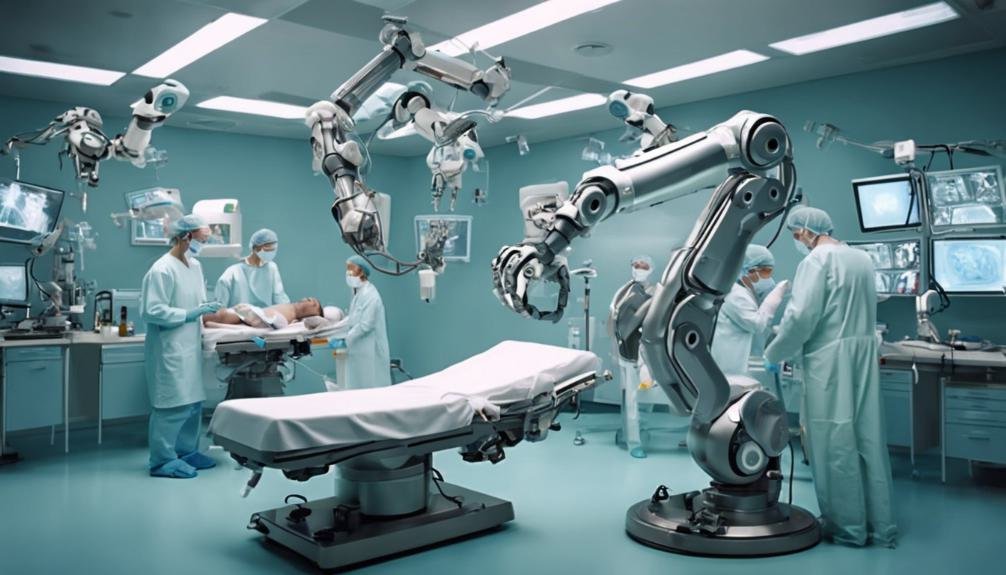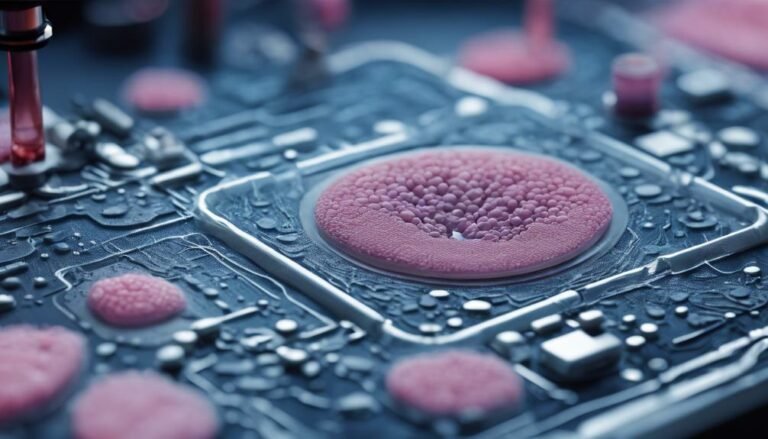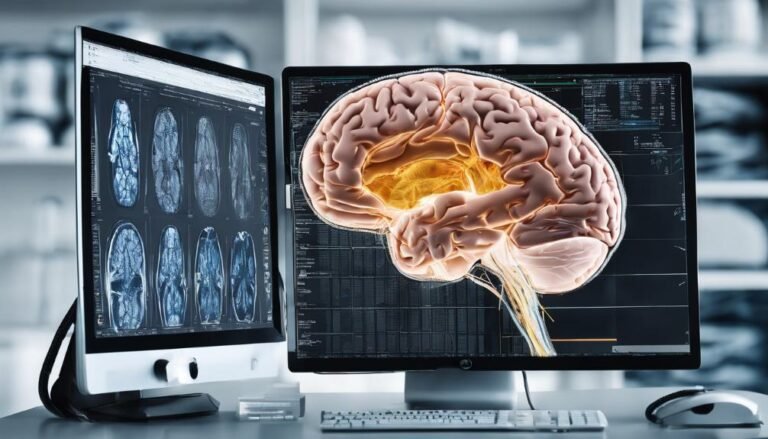AI for Transplant Surgery
Imagine a scenario where artificial intelligence can predict the likelihood of organ rejection before it even happens. This groundbreaking technology is not just a futuristic dream but a reality in the world of transplant surgery. By harnessing the power of AI, surgeons can now anticipate complications, tailor treatments, and improve patient outcomes like never before. The potential of AI in revolutionizing transplant procedures is vast, but the implications and challenges it brings along are equally significant.
Key Takeaways
- AI optimizes organ matching efficiency by analyzing blood type, tissue compatibility, and medical history.
- Predictive algorithms assess pre-op health data and risk factors for personalized post-op complication predictions.
- Advanced imaging and robotic assistance enhance surgical precision and improve patient safety.
- Automation streamlines surgical processes, reducing errors, improving accuracy, and enabling personalized treatment plans.
- Ethical considerations, regulatory frameworks, and guidelines are crucial for safe and transparent AI integration in transplant surgery.
Organ Matching Optimization
Utilizing artificial intelligence algorithms, organ matching optimization aims to enhance the efficiency and accuracy of matching donor organs with recipients for transplant surgeries. Donor selection plays an essential role in determining transplant success rates.
AI algorithms can analyze vast amounts of data related to both donors and recipients, considering factors such as blood type, tissue compatibility, organ size, and medical history. By processing this data, AI can identify the most suitable matches with a higher level of precision than traditional methods.
This optimization process greatly increases the chances of a successful transplant by ensuring that the donor organ is the best possible match for the recipient, thereby reducing the risk of rejection and post-operative complications.
Implementing AI in organ matching not only streamlines the matching process but also contributes to improved patient outcomes and overall transplant success rates. The ability of AI to swiftly and accurately assess compatibility factors makes it an invaluable tool in the field of donor organ selection for transplant surgeries.
Predicting Post-Op Complications
Organ matching optimization through AI algorithms not only enhances transplant success rates but also plays a crucial role in predicting post-operative complications for recipients.
Machine learning techniques have enabled the development of predictive algorithms that analyze various factors to anticipate potential surgical outcomes and patient outcomes accurately.
These predictive algorithms leverage vast amounts of data, including pre-operative health information, surgical history, organ compatibility, and post-operative care protocols. By processing this data, AI can identify patterns and risk factors that may lead to complications after transplant surgery.
Factors such as age, underlying health conditions, and organ quality are meticulously assessed by these algorithms to generate personalized risk assessments for each recipient.
Through the utilization of AI-driven predictive models, transplant teams can proactively address potential complications, optimize post-operative care plans, and improve overall patient outcomes.
Enhancing Surgical Precision
By integrating advanced imaging technologies and real-time data analysis, surgical precision in transplant procedures can be greatly enhanced. Robotic assistance plays a key role in this enhancement by providing surgeons with greater dexterity and control during delicate operations.
These robotic systems can execute precise movements with sub-millimeter accuracy, reducing the margin of error in transplant surgeries. Additionally, machine learning algorithms are being utilized to analyze vast amounts of data in real time, assisting surgeons in making informed decisions during the procedure.
These algorithms can predict potential complications based on the patient's specific medical data, enabling proactive measures to be taken to mitigate risks. Through the combination of robotic assistance and machine learning algorithms, transplant surgeons are able to achieve a level of precision that was previously unattainable.
This integration of technology not only improves the outcomes of transplant surgeries but also enhances patient safety and recovery rates.
Streamlining Surgical Processes
To optimize efficiency in transplant surgeries, integrating automation and data-driven processes can streamline surgical procedures for enhanced outcomes. Robotic assistance plays an essential role in streamlining surgical processes by offering precise movements and reducing the margin of error during delicate procedures. These robotic systems can assist surgeons in performing tasks with enhanced dexterity and control, leading to improved patient outcomes.
By incorporating robotic assistance, transplant surgeries can benefit from increased accuracy in donor organ harvesting, precise transplantation procedures, and reduced overall surgical time. Robotic systems allow for smaller incisions, decreased blood loss, and faster recovery times for patients undergoing transplant procedures.
Moreover, data-driven processes can further enhance the efficiency of transplant surgeries by providing real-time analytics, predictive modeling, and personalized treatment plans tailored to each patient's specific needs.
Future Implications and Challenges
Exploring the integration of AI technologies in transplant surgery presents a promising avenue for advancing patient care and surgical outcomes in the future. As AI continues to evolve, its role in transplant surgery is expected to bring about significant implications and challenges.
Ethical considerations play an important role in the future implications of AI in transplant surgery. Questions around patient consent, data privacy, and the use of AI decision-making systems will require careful navigation. Ensuring that AI is used ethically and in the best interest of patients will be essential.
Moreover, establishing a robust regulatory framework will be vital. Clear guidelines and regulations must be put in place to oversee the integration of AI in transplant surgery. This framework should address issues related to safety, accountability, and transparency in the use of AI technologies.
Balancing the potential benefits of AI with ethical considerations and a well-defined regulatory framework will be key challenges moving forward. Addressing these challenges effectively will be crucial in harnessing the full potential of AI in revolutionizing transplant surgery.
Conclusion
To sum up, AI has greatly enhanced transplant surgery by:
- Optimizing organ matching
- Predicting post-op complications
- Enhancing surgical precision
- Streamlining surgical processes
But as we look to the future, one can't help but wonder: how will AI continue to revolutionize transplant surgery and shape the future of healthcare? Only time will tell.







